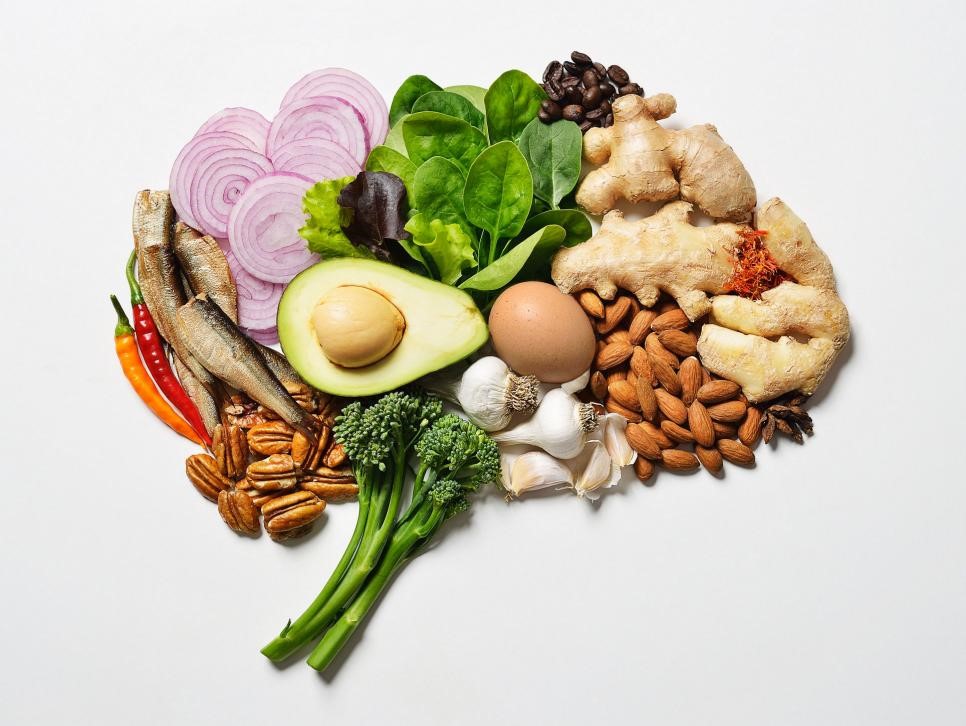In the field of wellness, healthy lifestyle, and dietary programs, the ketogenic diet and the intermittent fasting are two of the most popular trends that millions of people around the globe are trying in order to stay fit and/or lose body weight. Also, today´s understanding of these two dietary practices allows people to use them to treat several chronic diseases like type 2 diabetes, metabolic syndrome, psychological disorders, among others.
The Ketogenic Diet.
Also referred to as the keto diet, it is an eating plan based on the consumption of low portions of carbohydrates with moderate amounts of protein and high levels of fats in order to accelerate the fat burning process. Yes, it sounds a little bit crazy due to the “eat fat to lose fat”, but this regime is particularly famous for allowing an excess of body fat loss without starving.
The ketogenic diet owes its name to the “ketone bodies”, small fuel molecules that are produced in the liver during a metabolic state known as ketosis. Ketones are an alternative source of energy, which the human body resorts to when the glucose (regular energy source) supplies become dangerously low.
The easiest way to achieve ketosis is through fasting but, obviously, this is not a long-term solution and it can adversely affect health. A more balanced and indefinite way towards ketosis can be achieved by forcing the body into consuming a type of fuel different from glucose in order to gain energy.
Thus, the keto diet revolves around eating healthy fats in each meal so the liver produces ketones from it. In addition, individuals should eat moderate amounts of proteins, given that excess protein transforms into glucose, and avoid carbs as much as possible since these are naturally decomposed into glucose.
Daily nutritional consumption of 2,000 calories for an individual of approximately 70 kilos would then look like this:
- 165 grams of fats (75% of total calorie intake).
- 75 grams of proteins (20% of total calorie intake).
- 40 grams of carbs (5% of total calorie intake).
After ketosis, a process that usually takes a few days, the newly formed ketones act as a fuel source mostly for the brain, which is a hungry organ that consumes daily lots of energy. The brain can either supply from glucose or ketones, but never on fat directly.
Therefore, the fat burning phase occurs and is prone to radically increase when insulin levels are very low and that is when it becomes easier for the liver to access fat supplies and burn them off.

On the positive side, a ketogenic diet helps to put off extra pounds, decreasing the anxiety-hunger levels, maintaining a stable supply of energy, keeping people attentive and focused, diminishing cardiovascular risk, increasing HDL “good” cholesterol levels, reversing type 2 diabetes, and even stabilizing psychological disorders and neurodegenerative diseases.
However, on the other hand, keto dieters are vulnerable to numerous risks, including:
- A diet high in saturated fat is associated with high levels of LDL “bad” cholesterol, which can potentially lead to heart disease.
- A diet low in carbs, which are contained in grains, legumes, vegetables, and fruits, can lead to nutrients and micronutrients deficiency, such as selenium, magnesium, phosphorus, and vitamins B and C.
- Again, foods like grains and legumes are rich in fiber and their low consumption may cause constipation.
- Large amounts of fats to metabolize are likely to worsen previous liver problems if any.
Now, the top list of contraindications for the keto diet include patients with type I diabetes who, due to its pathological lower levels of insulin and higher levels of glycemia, are at risk of developing diabetic ketoacidosis (DKA), the excess in the production of ketones. This complication includes neurological implications, such as coma, delirium, and even death.
In addition, people on blood-pressure medication should be cautious when committing to a strict low-carb diet because of the low blood pressure risk. Repercussions, in this case, may include but are not limited to, generalized weakness, exhaustion, and dizziness.
Third but not least, a woman in the process of breastfeeding loses approximately 30 grams of sugar through the milk. In a regular woman, cut off carbs does not mean much trouble. However, when doing the keto diet, the risk of ketoacidosis increases mostly due to the extremely low levels of blood sugar.
Regardless of the controversy built around it, the ketogenic diet is highly recommended by many specialists if done following the right guidelines and recommendations. Either way is important to consult a doctor and nutritionist before starting to practice the diet.
Intermittent Fasting (IF).

Intermittent fasting is not a diet per se since it does not include specific restrictions according to the types of food consumed but about their consumption schedules. Nevertheless, IF relates to fitness-aimed programs and it encompasses patterns that alternate eating cycles with fasting cycles.
From the human evolution point of view, eventual fasting is a more natural pattern than conventional routines of three meals a day. History has shown how ancient humans were able to function without food consumption for long periods.
There are different intermittent fasting methods, typically involving healthy food consumption during the non-fasting rounds. The three most popular patterns work as follows:
- Alternate day fasting, which consists of rotating fasting and non-fasting days. Theoretically, it entails a calories shortage over the course of a week and weight loss is expected after a while. Although long-term health effects of this eating pattern remain unclear, many studies have shown its effectiveness regarding pounds loss. However, serious implications were reported, such as hunger pains, irritability, fatigue, and reduced focusing during fasting days as well as overeating during the non-fasting ones.
- Modified fasting, which merely implies a reduction of daily food intake according to different approaches. One version reduces calories to 20% or 25% of the typical amount while another version refers to consuming 500 calories a day. This pattern has been proven efficient in regards to weight loss, but the research results throw no significant benefits over conventional dietary programs.
- Time-restricted fasting, with most of the investigation involving laboratory animals, leaving its effectiveness still in the shadows. However, it relies on fasting periods of 8 to 16 hours occurring mainly during sleep hours.
During fasting, the human body undergoes several changes at hormonal, cellular, and genetic levels. To begin with, cells initiate an important repair process in which they absorb and eliminate old and dysfunctional protein chains inside them, a process called autophagy.
On the hormonal side, the stored body fat becomes more accessible due to an adjustment of the body’s hormones: insulin sensitivity improves and its levels decrease dramatically. In addition, the Human Growth Hormone (HGH) levels jumpstart, benefiting muscle gain and fat loss.
The above changes are mainly the cause of all the powerful health benefits for which intermittent fasting is recognized as one of the most popular health and fitness trends nowadays. Said benefits are longevity, free radicals reduction, and cellular repair processes, boosting fat-burning mechanisms and metabolism improvement, to name a few.
One of the most documented beneficial effects of IF is the prevention of hypertension by activating the parasympathetic system, lowering the systolic and diastolic blood pressure ciphers. Another positive effect of intermittent fasting is the enhanced glucose metabolism and increased tissues sensitivity to insulin.
However, said improvements connect to several variants and lifestyle conditions along with the weight-loss mechanisms. For this reason, the relevance of the reduced amounts of food consumed during fasting as the ultimate and decisive element remains questionable.
Every weight-loss and nutritional strategy has its own contraindications and disadvantages, with IF not being the exception, since fasting can be a potentially dangerous option for some individuals. It is not recommended for pregnant and breastfeeding women, patients with hormonal imbalances, diabetics, underweight people, and those with psychological eating disorders.
Merging of the Keto Diet and Intermittent Fasting.
Combining both methods has turned out to be very helpful for lots of people, especially because fasting helps to accomplish the process of ketosis.
However, it is important to note that dieters can simply follow a well-rounded low-carb nutrition in order to reach ketosis. That is to say, fasting is merely a tool that allows reaching ketosis quicker but it is not compulsory.
Biochemically, a body preserves its energy balance by shifting from carbohydrates to fats for fuel source during both fasting and ketosis. This way, the path to the ketosis state is smoother, and once it is achieved, accomplish an intermittent fasting schedule is easier to follow mainly because there are fewer hunger pans. In addition, intermittent fasting patterns keep the body metabolism high, easing up a quick adaptation to health improvements through carbs cut down.
Some additional benefits obtained when simultaneously committing to the ketogenic diet and intermittent fasting, are as follows:
- Adding a fasting schedule to a keto diet potentially helps burning more fat because IF boosts metabolism by stimulating heat production or thermogenesis.
- Gaining muscle mass is a difficult enterprise with just practicing the ketogenic diet. However, by introducing intermittent fasting to the mixture, this helps preserve muscle mass during weight loss because it improves the body’s sensitivity to insulin, blood glucose regulation, energy levels, and the production of growth hormone.
- In addition, several studies emphasize that IF may reduce hunger and encourage feelings of fullness, which adds up to the weight loss mechanism.
- Above all things, reaching ketosis while fasting leads to lower body fat percentage, being capable of showing a slimmer body.
To conclude, it is paramount to keep in mind that combining a ketogenic diet and intermittent fasting patterns may not work for everyone, even though it has rendered safe results for lots of individuals. As usual, pregnant women (or breastfeeding) and those with an eating disorder background are strongly advised to avoid this mix.
People that consider fasting during a keto diet extremely difficult may experience negative consequences. And, of course, people with health conditions such as diabetes or heart disease, must at all times speak to their physicians before trying to include intermittent fasting on a ketogenic dietary regime.


Leave A Comment